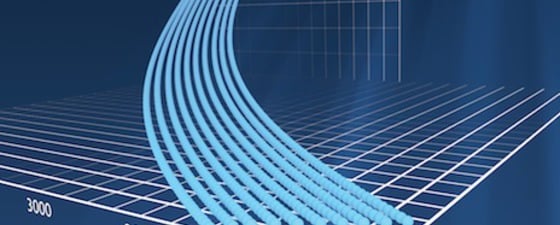WesternGeco has now introduced its ObliQ technology to help solve his problem through its unique sliding-notch broadband acquisition and imaging technique, which enhances low-frequency content of marine seismic data without compromising high frequencies. It achieves this by using a variable cable depth, which increases from the near offset to the farthest offset. The minimum and maximum cable depths can be determined in the survey design and selected to optimise the recorded bandwidth to meet the geophysical objectives of the survey. In surveys that use this technique, streamer depths range from 5m to 50m – a wider selection of depths than available in conventional acquisition.
The ObliQ technique de-ghosts data acquired with a variable streamer depth by using a workflow that improves the low-frequency content while maintaining the high-frequency content. This process minimises the effect of the receiver ghosts on the pre-stack data and so allows us to re-datum the cable to a constant depth and process the now de-ghosted data in a conventional fashion.


